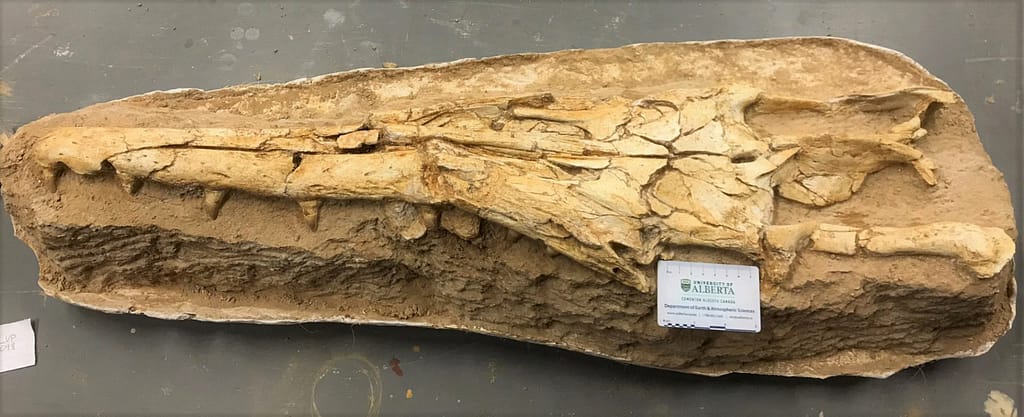
About Gavialimimus almaghribensis
A phosphate mine in Morocco has yielded the identification of a new genus and species of mosasaur based on a 1-meter-long skull and isolated bones. Gavialimimus almaghribensis existed approximately 72 to 66 million years ago during the Cretaceous period. It possessed a long and narrow snout with interlocking teeth, resembling gharials which are relatives of crocodiles and alligators.
Significance of the Discovery
Lead author Catie Strong, a student from the Department of Biological Sciences at the University of Alberta, highlights the significance of this discovery. She explains that the finding brings clarity to an already diverse picture of mega-predators competing for resources. The long snout of Gavialimimus almaghribensis suggests that it was likely adapted to a specific form of predation or niche partitioning within the larger ecosystem.
Diversification of Mosasaur Species
Each mosasaur species appears to have adaptations suited for different prey items or hunting styles. Strong notes that Gavialimimus almaghribensis, with its long snout and interlocking teeth, was possibly specialized in catching rapidly moving prey. Another distinct species, Globidens simplex, possessed stout, globular teeth adapted for crushing hard-shelled animals. Although there may have been some overlap in prey items, overall evidence suggests diversification of these species into different niches.
Concept of Niche Partitioning
Strong emphasizes that the anatomical differences among these mosasaurs support the concept of niche partitioning, wherein different species occupy distinct ecological roles. This notion of coexistence through evolutionary paths aligns with the diverse array of mosasaurs inhabiting the same time and place. The study of Gavialimimus almaghribensis and its implications for species diversification is detailed in a paper published in the Journal of Systematic Palaeontology.



